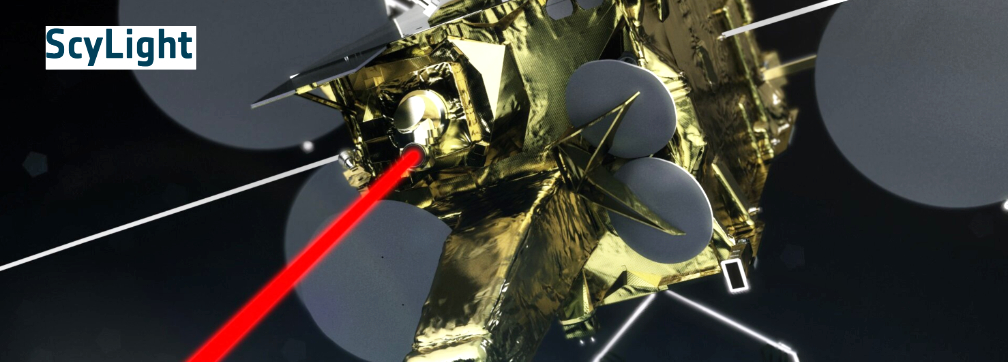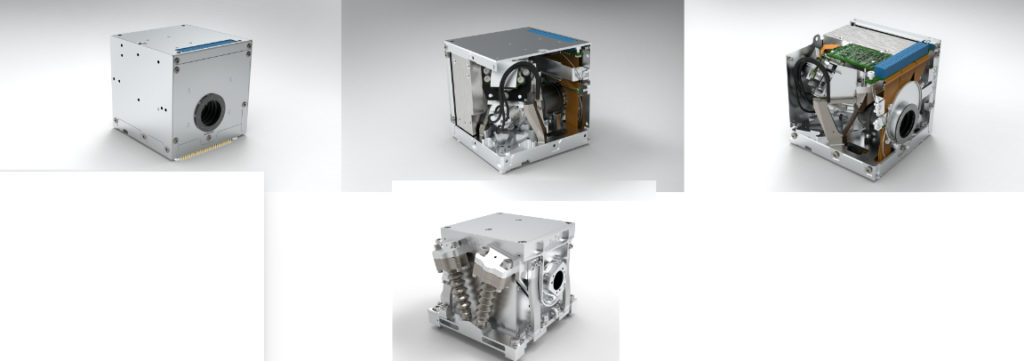
Ultra-high data rates for small satellites, free of licensing fees and year-long application processes – this will soon be reality. Thanks to the award to carry out an ESA ScyLight technology demonstration project supported by the Netherlands Ministry of Defense and Netherlands Space Office (NSO), a Dutch consortium consisting of TNO and Hyperion Technologies will be launching the jointly developed laser satellite terminal into space. The target launch is set for early 2022 on board the NorSat-TD satellite.

The plug-and-play terminal, called CubeCAT, will enable future smallsats to downlink data with speeds up to 1 Gbps and uplink of 200 Kbps. Currently, smallsats are limited in bandwidth using radio communications with much slower throughput. In addition, the application process to obtain a licence to send and receive on a dedicated radio frequency takes often one to two years. This is not the case for laser communication.
CubeCAT, with its 1U form factor, low power needs and low mass, can be easily integrated into small satellites. In addition, the developers added an on-board data management system, featuring a large data storage buffer, into the terminal.

CubeCAT – closed view, inside view 1, inside view 2, front view
The CubeCAT module is mounted into a highly damped and hysteresis free suspension system to withstand the satellite launch loads.
The full assembly, referred to as SmallCAT (bottom image), will be delivered to the integrator.
Copyright: TNO
The demonstration of CubeCAT relies, of course, on the availability of an optical ground stations to receive data. Within the ScyLight project, TNO is building an optical ground station in The Hague, Netherlands. FSO Instruments as well as Hyperion are equally involved by providing key elements, ranging from optical benches, deformable mirrors and receiver technology. ESA’s optical ground station in Tenerife, Spain, and other stations will also support the downlinking of data. Ultimately, the consortium will be able to support laser communication needs for sending and receiving in space, air and ground.
The recent acquisition of Hyperion Technologies by AAC Clyde Space is expected to grant even more clients access to this technology. AAC Clyde Space is based in Sweden, Scotland and, following the equally recent acquisition of Space Quest, now also in the USA. In the future, CubeCAT can be offered as a standard technology option to its worldwide client base.
NorSat-TD is a technology demonstration mission managed by the Norwegian Space Centre (NOSA). It will be built and integrated by the UTIAS Space Flight Laboratory (University of Toronto, Institute for Aerospace Studies).

Bert Monna, Managing Director of Hyperion Technologies, explains the rationale for developing laser communication for small satellites, “Our clients’ mission success depends very much on how much satellite data they can get back to Earth. Imagine having a novel camera onboard of a satellite that can shoot high-resolution images. Within one 90 minute orbit it can only operate for four to six minutes because it cannot download all of the data fast enough. What doesn’t get downloaded, is overwritten in the next orbit. Does this mean we should take lower resolution images? Should we be satisfied with this quantity? Both options are not acceptable. We chose to address the bottleneck of bandwidth with the development of CubeCAT and bring a new era to small satellites.”
He continued, “We believe that our solution will change the landscape of small satellites, for two reasons: First, together with TNO we are able to address all laser technology needs on space and on ground. This enables us to offer a holistic and integrated system from the start. Secondly, working with a research institute ensures that our solution is, and stays, cutting edge.”
